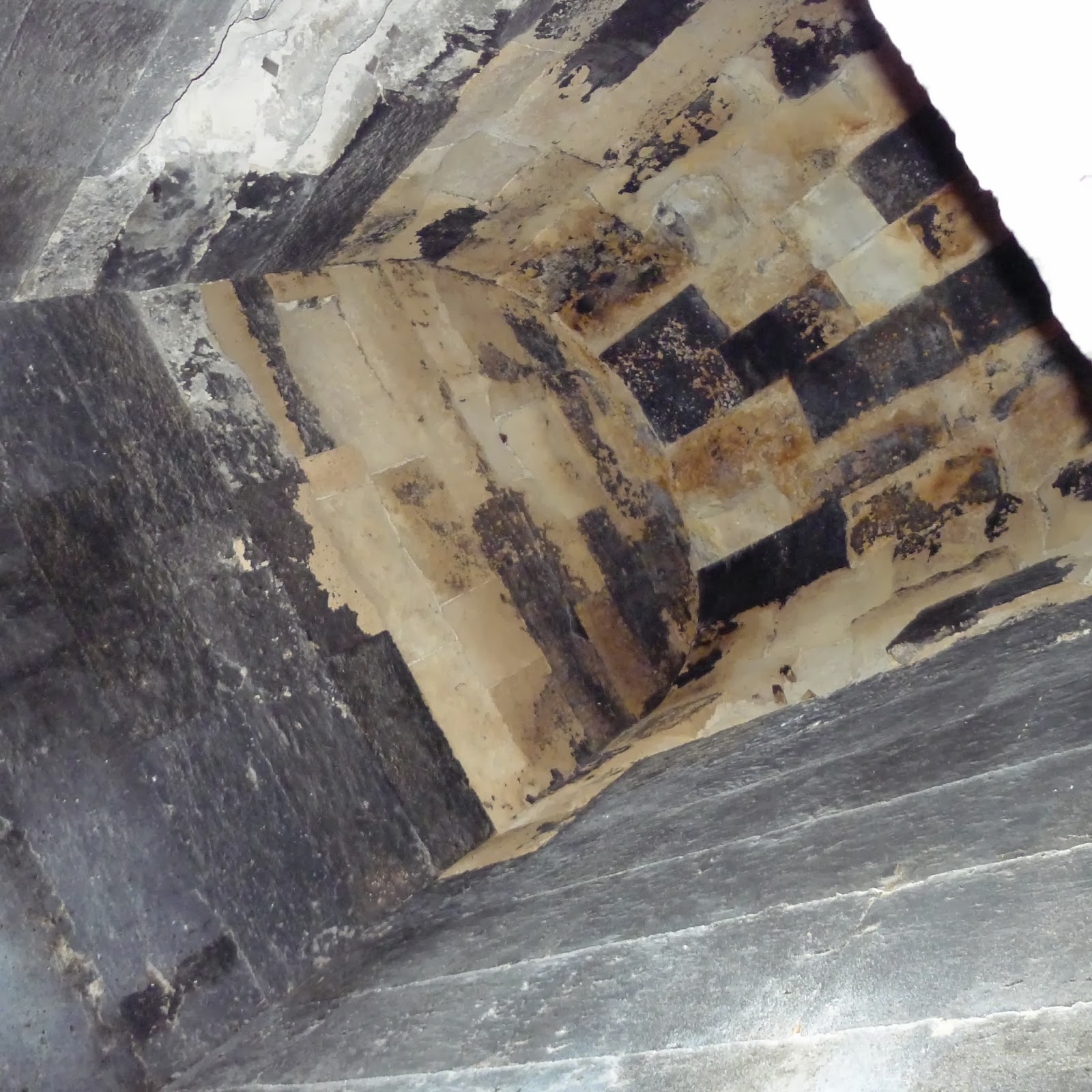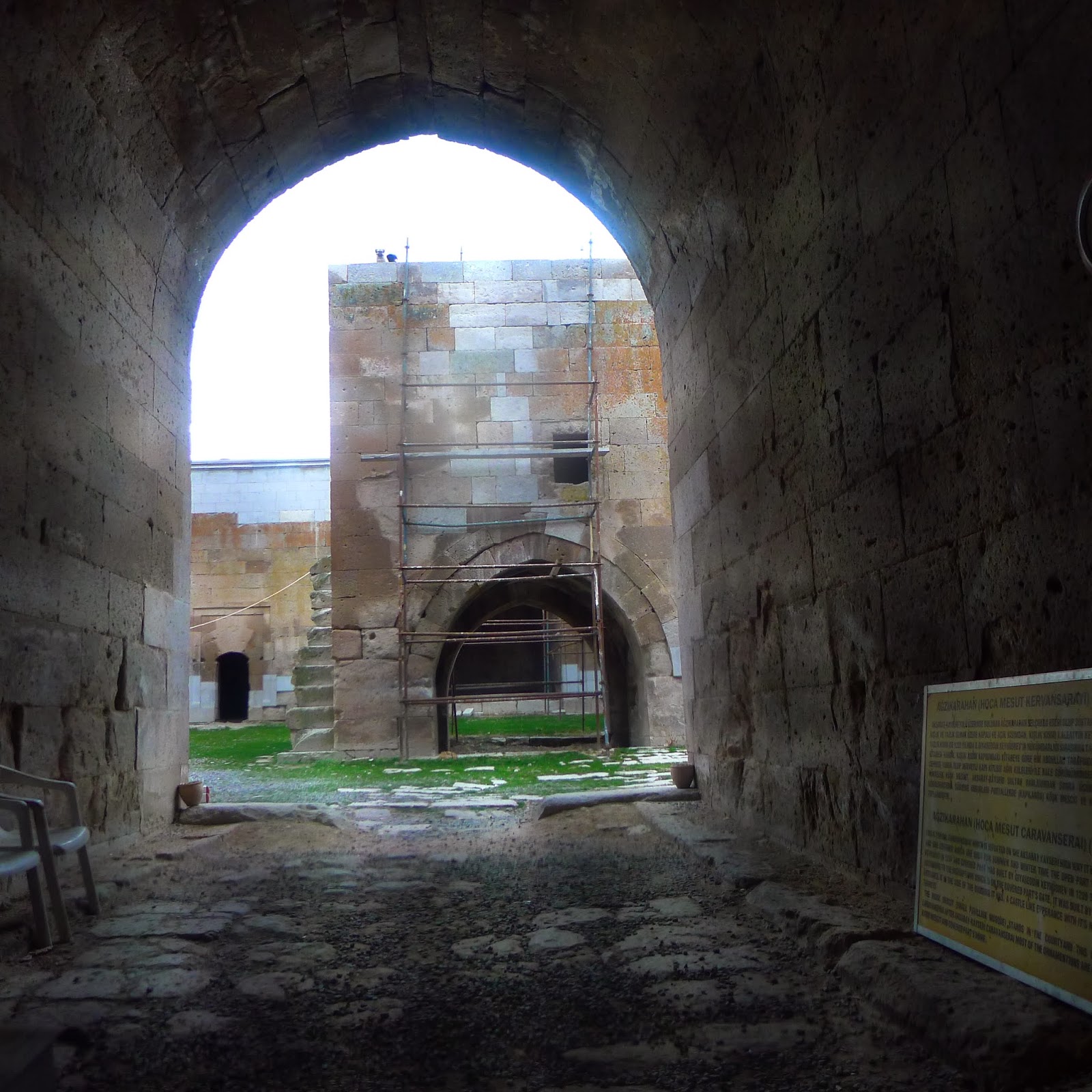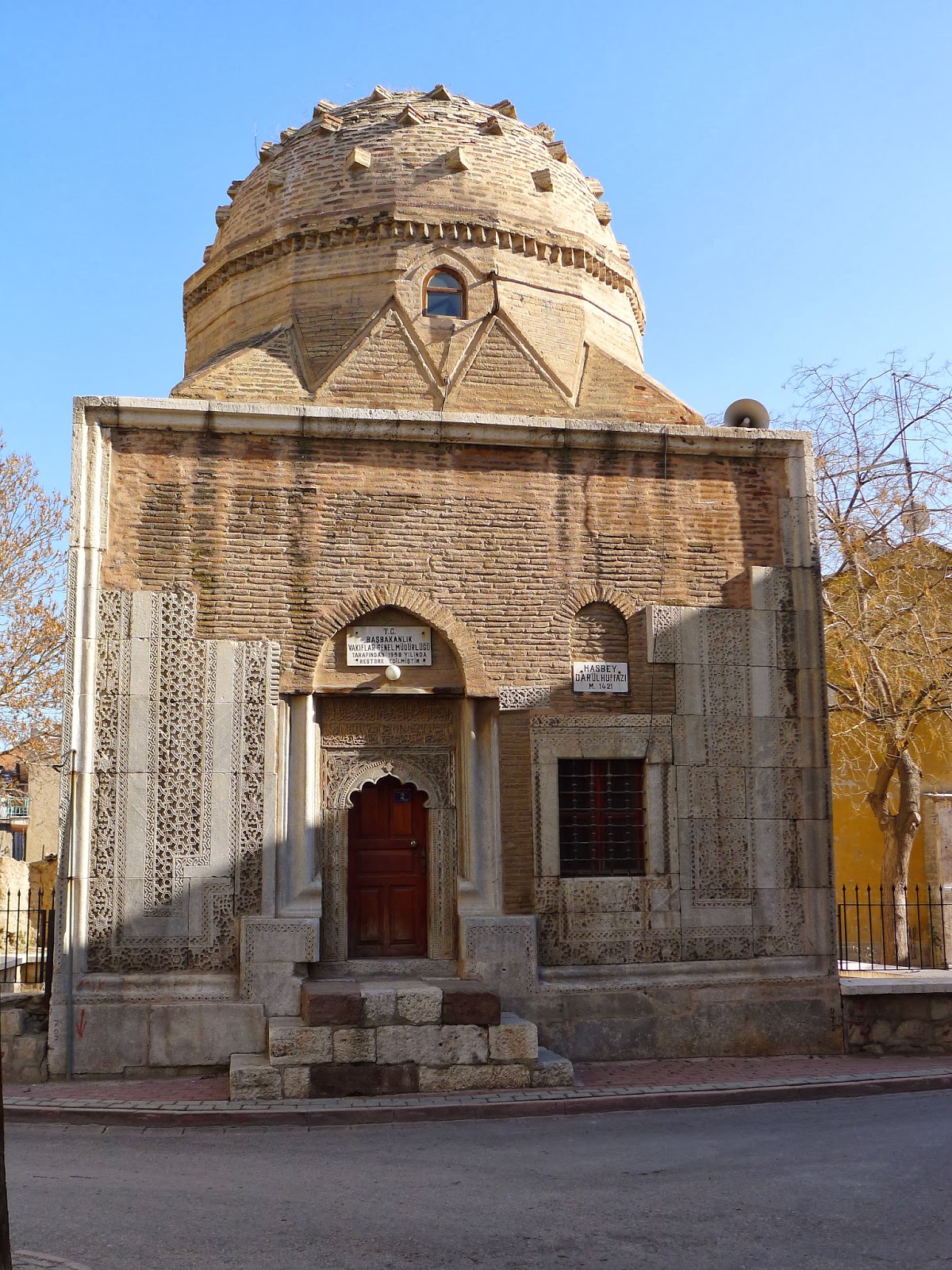It was necessary for my research to take a short trip to the interior of Anatolia. I needed to acquaint myself with the architecture of the Seljuks of the 13th century. Below you will see a number of the sites and perhaps a few other sites that I found intriguing. (A little out of order... not sure why blogger reordered the images...)
Alaeddin Camii entrance, Konya.
Interior of the Alaeddin Camii.
Wooden minbar allegedly from the 13th century Alaeddin Camii.
Unfinished Kumbet at the Alaeddin Mosque, Konya.
Young boy playing in the courtyard of the Alaeddin mosque, Konya.
Remains of the Alaeddin Kosku. The dilapidated covering is from the 60s...
Sircali Mederese, Konya.
Sahip Ata complex entrance.
Sahip Ata complex museum, Konya.
Entrance to the Karatay Han.
A headless man gutter spout at the Karatay Han.
Small unique 13th century mosque- Tas Camii, Konya.
Karatay Han courtyard entrance detail, Snake motif.
Dome of the Karatay Han.
Karatay Han interior. Anyone want to host an event in a caravansarai?
Highly restored Saru Han, between Aksaray and Kayseri.
Sultan Han outside of Kayseri, the second largest han in Turkey.
Mescid in the central courtyard of the Sultan Han outside of Kayseri.
Interior of the Kayseri Sultan Han. The raised platforms were for animals while the other spaces were for animals.
Dragon motif on the Kayseri Sultan Han mescid.
Back view of the Kayseri Sultan Han mescid.
Entrance to the Kayseri Sultan Han mescid. Yes, I climbed these steps...
Sunset view of the salt lake near the Sultan Han outside of Kayseri.
Doner Kumbat, Kayseri.
Detail view of the animal motif and the tree of life design to the right on the Doner Kumbat.
Kumbat within the Hunat Hatun complex.
The unusual muqarnas base of the above kumbet.
The oldest church (not much of the original structure is extant) in the Roman empire, founded by Constantine's mother in Sille.
Near by graveyard. Most are Muslim graves.
Zazadin Han.
Spolia is widely used throughout this building. You can see one of the many Christian crosses that are present in the walls.
Obruk Han.
Obruk translates as sinkhole. This was found out back.
Detail of decor of Aksaray Sultan Han.
A look at one of the interior rooms. This would have been a private room that could have been rented by travelers and merchants.
Interior of the Sultan Han outside of Aksaray.
Agzikara Han.
Agzikara Han interior.
Friends who accompanied us around the Agzikara han.
Hidrellez Kosku outside of Erkilet. Seljuk site respected.
Modern interpretation of a dome?
Hasbey Darulhuffazi, Konya
Seljuk type tent as seen in the Kayseri Ethnography Museum.
We are on the roof of a han! At the Kayseri Sultan Han.
Tiny door at the Sahibiye Medrese.
Detail of the Sahibiye Medrese entrance.
Detail of the Sahabiye Medrese decor.
Oh hello, Catalhoyuk!
Interior of the Aksaray Sultan Han.
Entrance to the Karatay Museum, Konya.
Interior dome at the Karatay Museum, Konya.
Detail of Karatay Museum dome, Konya.
Seljuks tiles seen in the Karatay Museum, Konya.
Favorite piece seen in the Karatay Museum, Konya.
Unfinished Kumbet at the Alaeddin Mosque, Konya.
Young boy playing in the courtyard of the Alaeddin mosque, Konya.
Remains of the Alaeddin Kosku. The dilapidated covering is from the 60s...
Sircali Mederese, Konya.
Sahip Ata complex entrance.
Sahip Ata complex museum, Konya.
Whirling Dirvishes in Konya. apparently the most realistic ceremony open to the public.
Small unique 13th century mosque- Tas Camii, Konya.
Karatay Han interior. Anyone want to host an event in a caravansarai?
Interior of Saru Han.
Sultan Han outside of Kayseri, the second largest han in Turkey.
Mescid in the central courtyard of the Sultan Han outside of Kayseri.
Interior of the Kayseri Sultan Han. The raised platforms were for animals while the other spaces were for animals.
Back view of the Kayseri Sultan Han mescid.
Entrance to the Kayseri Sultan Han mescid. Yes, I climbed these steps...
Sunset view of the salt lake near the Sultan Han outside of Kayseri.
Doner Kumbat, Kayseri.
Detail view of the animal motif and the tree of life design to the right on the Doner Kumbat.
Kumbat within the Hunat Hatun complex.
The unusual muqarnas base of the above kumbet.
The oldest church (not much of the original structure is extant) in the Roman empire, founded by Constantine's mother in Sille.
Near by graveyard. Most are Muslim graves.
Zazadin Han.
Spolia is widely used throughout this building. You can see one of the many Christian crosses that are present in the walls.
Obruk Han.
Obruk translates as sinkhole. This was found out back.
Sultan Han near Aksaray. The largest han in Turkey. The architect was actually a Syrian.
Detail of decor of Aksaray Sultan Han.
A look at one of the interior rooms. This would have been a private room that could have been rented by travelers and merchants.
Interior of the Sultan Han outside of Aksaray.
Agzikara Han.
Agzikara Han interior.
Friends who accompanied us around the Agzikara han.
Hidrellez Kosku outside of Erkilet. Seljuk site respected.
View towards Kayseri from the Hidrellez Kosku.
Modern interpretation of a dome?
Hasbey Darulhuffazi, Konya
Seljuk type tent as seen in the Kayseri Ethnography Museum.
We are on the roof of a han! At the Kayseri Sultan Han.
Tiny door at the Sahibiye Medrese.
Detail of the Sahibiye Medrese entrance.
Oh hello, Catalhoyuk!
Interior of the Aksaray Sultan Han.
The Agzikara Han guard dog (not that we could get inside anyway).
Entrance to the Karatay Museum, Konya.
Interior dome at the Karatay Museum, Konya.
Detail of Karatay Museum dome, Konya.
Seljuks tiles seen in the Karatay Museum, Konya.
Favorite piece seen in the Karatay Museum, Konya.



























































Comments